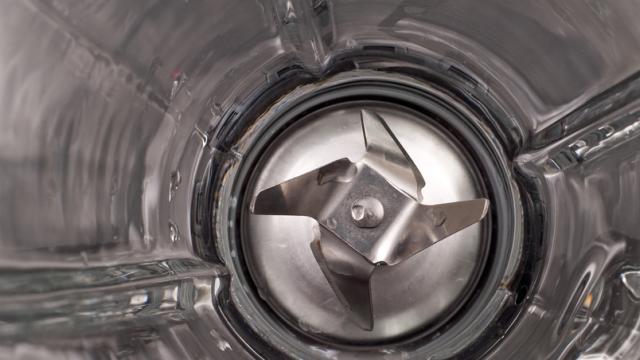Graphene may be the supermaterial to rule them all — but it turns out you can make it at home. In your kitchen blender. Here’s how.
A team of researchers from Trinity College Dublin in Ireland have been trying to work out the best way to mass produce graphene, those sheets of carbon that are just one atom thick. Currently, even the best laboratory techniques can only generate a measly half gram of the stuff per hour.
The team knew that it was possible to shear thin sheet of graphene from bigger blocks of graphite — the form of compound in pencil lead — which is essentially made of many sheets of graphene stacked together in layers. So, they got wondering what the most effective way of reliably shearing off those layers was.
Enter a laboratory mixer and some surfactant, added to ease the layers apart (and keep them apart). By spinning up graphite in the bench-top mixer, they produced what they thought was graphene; then, electron microscopy confirmed that they were indeed producing the magical stuff. The best part though? They were churning it out at a rate of five grams per hour.
Naturally, they thought their process should be scaleable — but what to swap for an expensive mixer and lab-grade surfactant?
A kitchen blender and a little washing-up liquid, that’s what. The process is pretty simple: spoon some graphene into your blender, add water and dishwashing liquid, then blitz high speed. You’ll be left with a black — slightly frothy — liquid.
They found the technique actually worked — albeit temperamentally. The exact amount of dishwashing liquid depends on the properties of the graphene used, you see, which need to be determined using expensive analytical chemistry equipment. It also doesn’t convert all the graphite into graphene, leaving you with a bit of a separation problem. Essentially, you’ll end up with a black liquid full of graphene, but you’ll be unable to extract it and remove it — at least at home.
Still, despite those problems for amateurs, the technique does show industrial promise. Calculations suggest that a a 10,000-litre vat with the right motor could produce 100 grams of graphene per hour, and a pilot scheme is already rolling into action. Given all the cool stuff that graphene can do, that kind of production scale could help the supermaterial finally hit the mainstream. [Nature Materials via New Scientist]
Picture: jcjgphotography/Shutterstock
